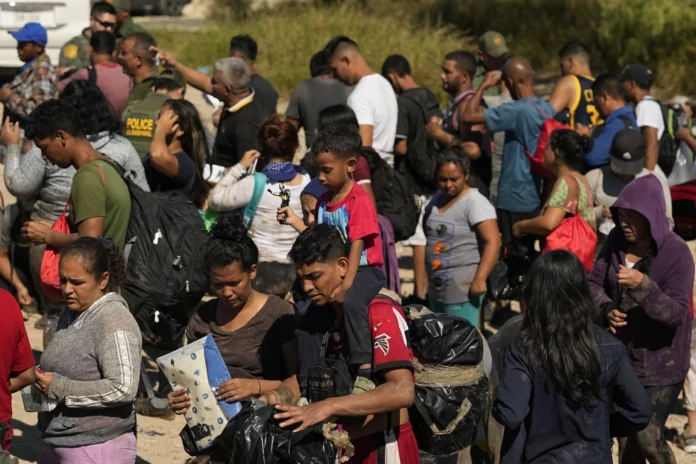The recent decrease in arrests for illegal border crossings on the U.S.-Mexico border might be short-lived, as fluctuations in numbers are common and often influenced by multiple factors. Following a record-breaking surge in encounters at the southern border in December, authorities reported a 50% decline in crossings last month.
The most significant drop occurred in the Del Rio sector, encompassing Eagle Pass, Texas, a focal point of Governor Greg Abbott’s recent border enforcement initiatives. Mexico also intensified its enforcement actions following discussions with President Joe Biden’s administration.
In January, overall arrests by U.S. Border Patrol decreased by 50% from December, which marked the highest monthly total on record at 249,735. Tucson, Arizona, remained the busiest sector with 50,565 arrests, down 37% from December, followed by San Diego. The Del Rio sector experienced a substantial 76% decrease to 16,712 arrests, the lowest since December 2021. Arrests in Texas’ Rio Grande Valley dropped by 60% to 7,340, the lowest since July 2020.
Notably, arrests of Venezuelans plunged by 91% to 4,422 from 46,920. However, this trend may change soon, as Panama reported a 46% increase in migrants traversing the perilous Darien Gap in January, with the majority heading to the United States, including sizable numbers from Haiti, China, Ecuador, and Colombia.
MEXICO’S RESPONSE: Mexico has been taking measures to deter migrants, forcing them from freight trains and transporting them to the southern border. This enforcement initiative began after a visit from U.S. Secretary of State Antony Blinken to Mexico City on Dec. 28. Mexico’s federal government, along with border states like Coahuila, has collaborated in these efforts, deploying military and national guard personnel to patrol the Rio Grande banks.
TEXAS’ ACTIONS: In Eagle Pass, the Texas National Guard assumed control of a city-owned park along the river, denying U.S. agents access since Jan. 10. Additional razor wire and anti-climbing fencing were installed, disrupting the use of the park by Border Patrol for monitoring, patrols, and processing migrants.
OTHER FACTORS: Apart from enforcement efforts, weather conditions often influence migration patterns, with an average 40% increase in southern border crossings from January to March in recent years. The end of COVID-19 restrictions in May 2021 and the expiration of Title 42, a public health policy used to turn asylum-seekers back to Mexico, also played roles in the fluctuating numbers. The Biden administration implemented new rules to deny asylum to individuals traveling through another country, contributing to the overall trend in border crossings.
